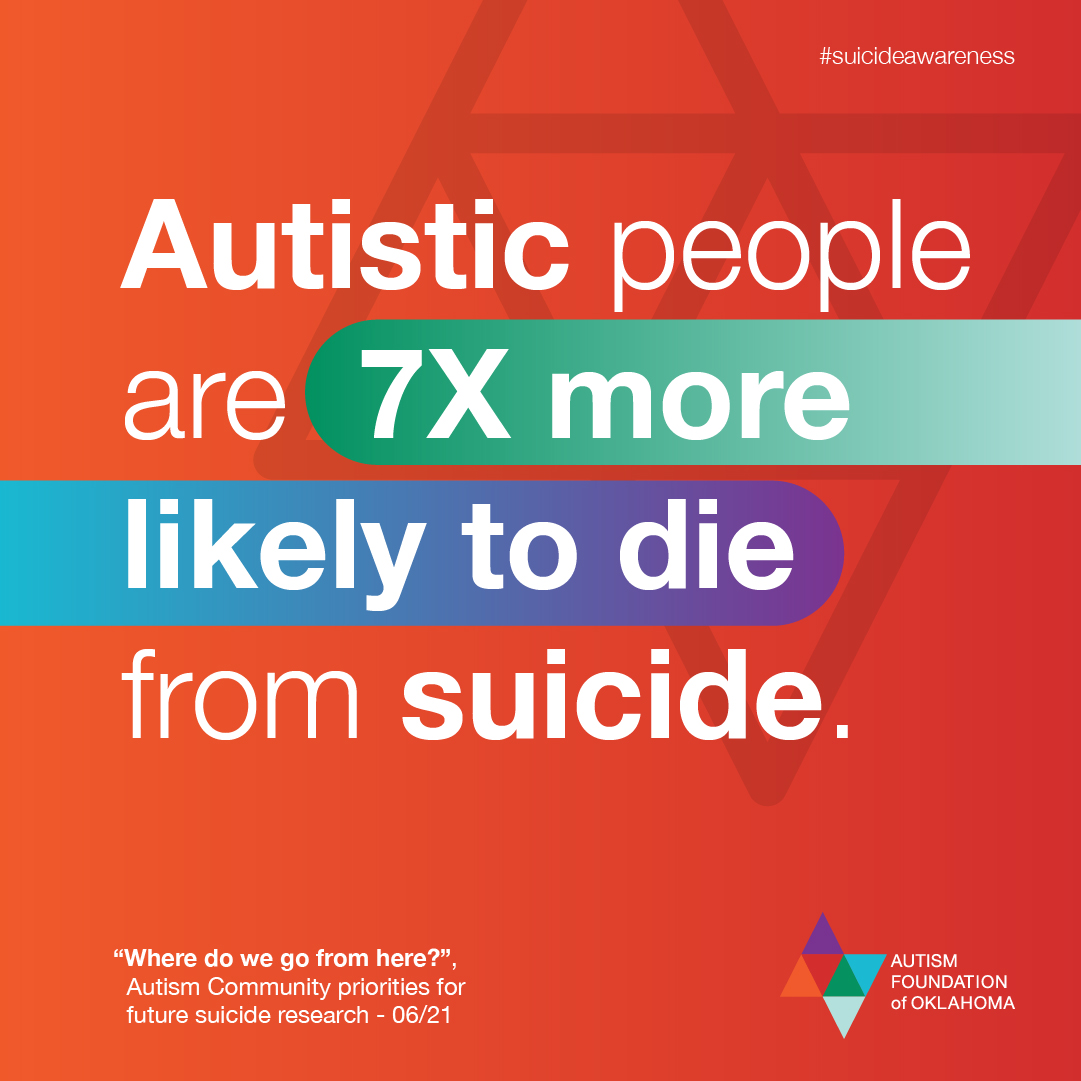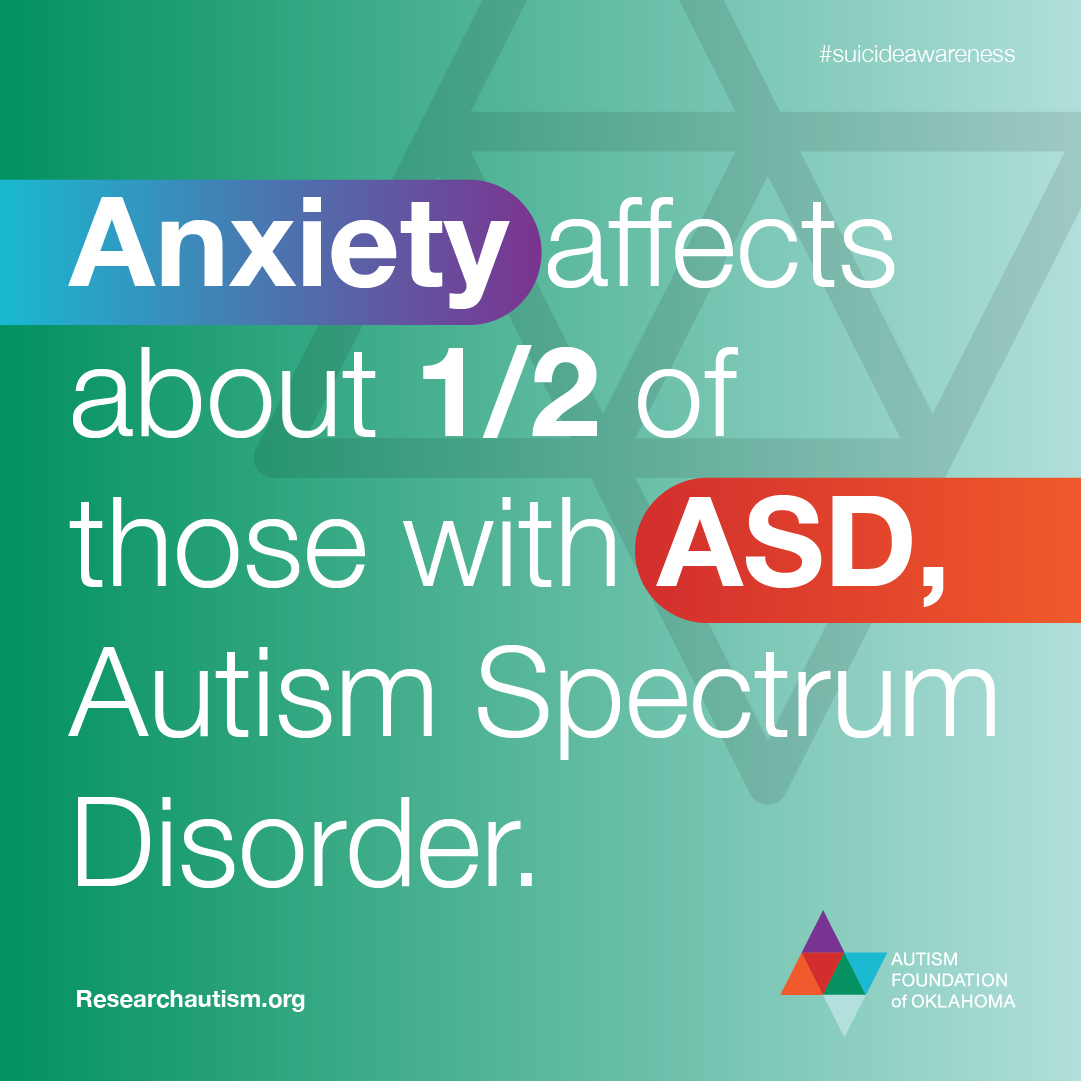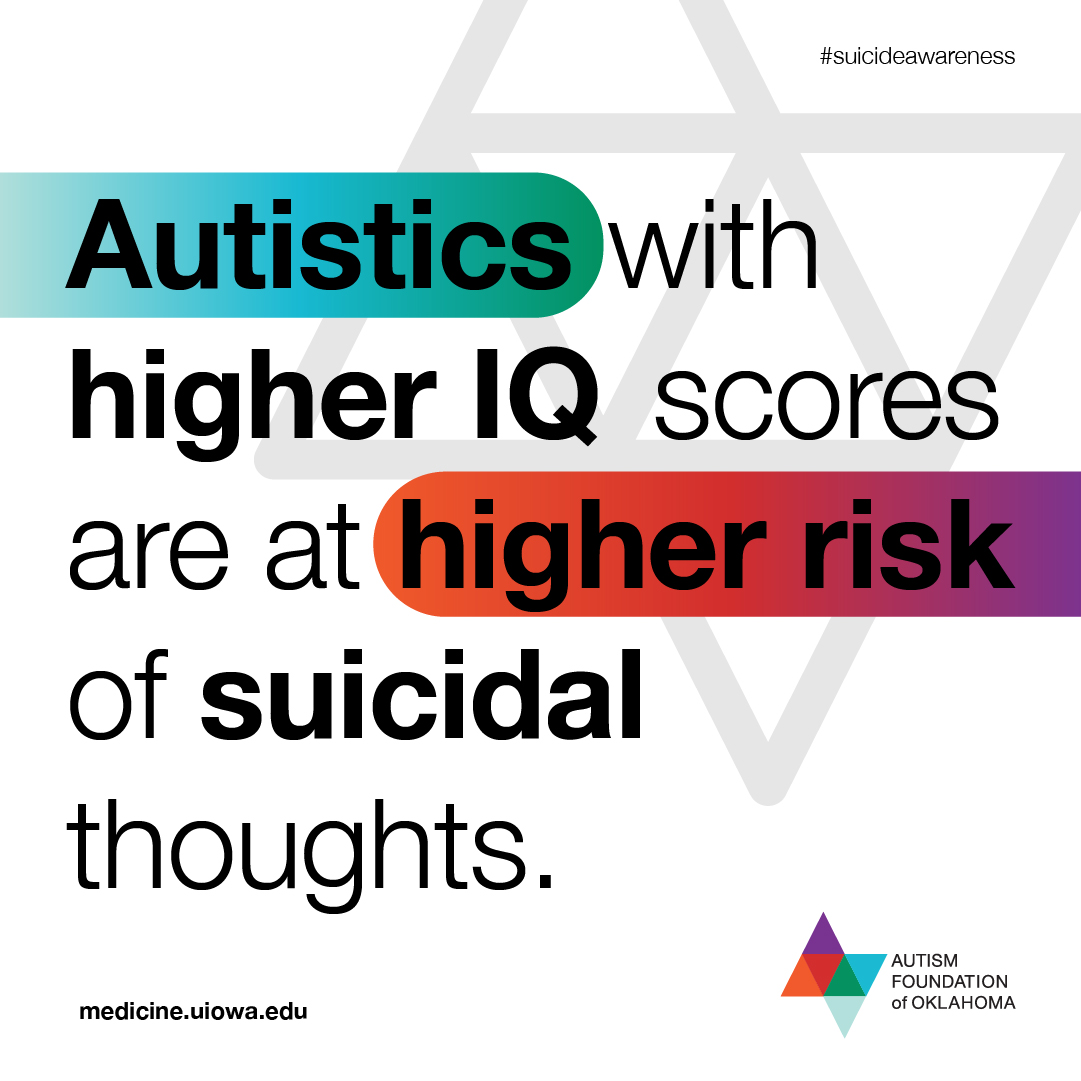Suicide is the 2nd leading cause of death among autistic people.
Cite: ncbi.nlm.nih.gov


Suicide is the 2nd leading cause of death among autistic people.
Cite: ncbi.nlm.nih.gov

Suicide Risk Factors for Autistic People
Co-Occurring Mental Health Conditions: 78% of autistic children have at least one mental health condition. 41% to 50% of autistic kids have two or more mental health conditions. Anxiety affects about half of those with ASD who have a mental health condition.
Camouflaging/Masking: Autistic people—particularly those with level 1 autism—often try to “camouflage” their autism, finding ways to mask their symptoms to fit in with others. Camouflaging is mentally burdensome and is linked to higher rates of mental illness and suicide.
Autistic Burnout: Autistic burnout is a syndrome that results from chronic life stress and a mismatch of expectations and abilities without adequate support. It is characterized by pervasive, long-term (typically 3+ months) exhaustion, loss of function, and reduced tolerance to stimulus.
Being Female: Autistic females are more than 3 times more likely to attempt suicide than their neurotypical peers.
Adverse Life Events: Navigating life as an autistic person is often challenging, and autistic people are at greater risk of being bullied, experiencing financial problems, being socially excluded, and facing workplace and relationship problems, any of which may be at the root of suicidality.
Late Diagnosis: Many autistic people remain undiagnosed well into adulthood, with women being more likely to receive a late diagnosis (or stay undiagnosed altogether). Late diagnosis is linked with a greater risk of suicidal ideation.
Isolation: Autistic people face social and communication problems, leading to isolation and a lack of support—difficulty building relationships, which increases their risk of suicide.
Cite: PsychologyToday.com
Cite: 988lifeline.org
988 Oklahoma – Mental Health Lifeline
Mental Health Association of Oklahoma – Local Mental Health Support
Oklahoma State Department of Education: Suicide Prevention Resources – Oklahoma Suicide Prevention
Gateway to Prevention Resources – Local Suicide Prevention Resources
988 Lifeline – Suicide and Crisis Lifeline
Substance Abuse and Mental Health Services Administration – Support and Treatment Services
Mental Health Association – Treatment and Services
American Psychiatric Association – Support and Resources for Patients and Families
American Psychology Association – Help for Emotional Crisis
National Alliance of Mental Illness – Mental Health Resources
National Institute of Mental Health – Mental Health Resources Including Federal Agencies
American Psychology Association – Both Local and National Resources